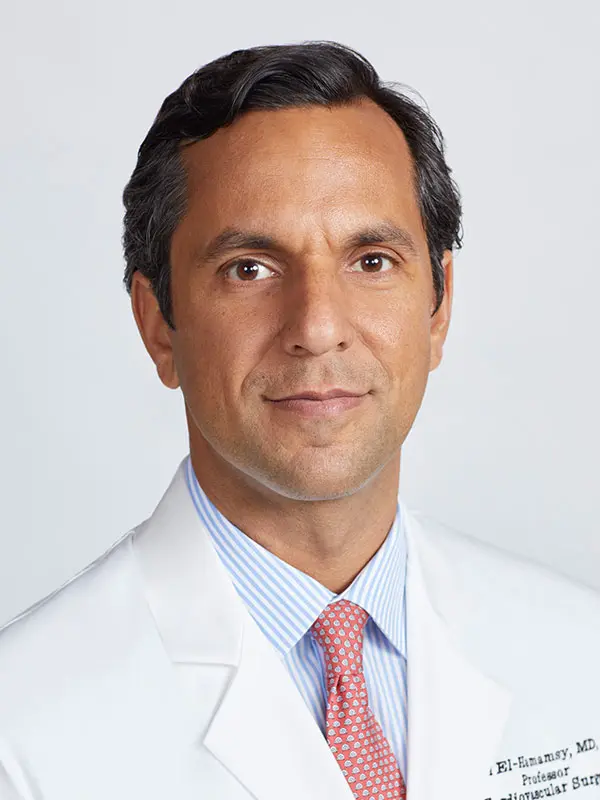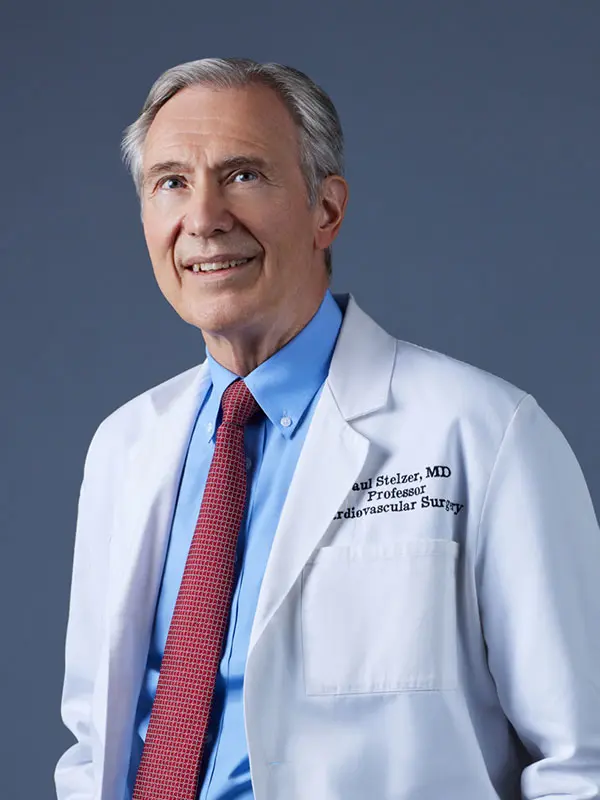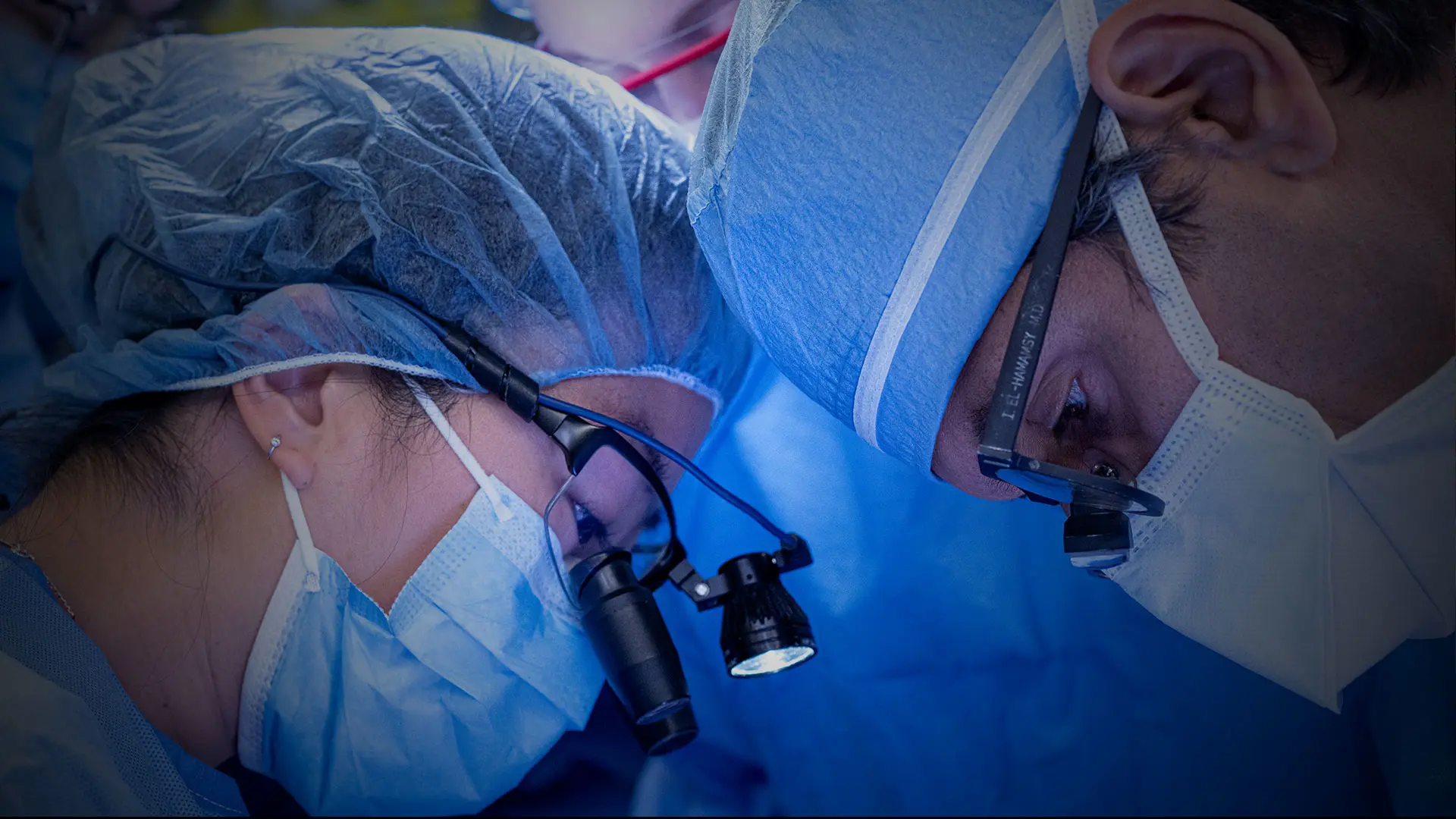A team of Mount Sinai cardiovascular surgeons, led by Ismail El-Hamamsy, MD, PhD, Director of Aortic Surgery for the Mount Sinai Health System, performed 100 successful Ross procedures in 2023. The Ross program became the first to achieve this milestone in a single year.
“The Ross procedure is the optimal treatment for replacing a diseased aortic valve in adolescents and adults, because it maximizes the use of their own tissue and restores long-term life expectancy, unlike mechanical or tissue valve replacements,” says Dr. El-Hamamsy, the Randall B. Griepp Professor of Cardiovascular Surgery at the Icahn School of Medicine at Mount Sinai. “This is all the more life-changing for women who are contemplating future pregnancies and for patients who lead active lifestyles.”
Over the past decade, there has been a global rise in Ross procedures, as studies have found superior long-term outcomes for patients who have undergone the procedure, compared to patients who received biological or mechanical aortic valve replacements. The Ross procedure is the only aortic valve replacement surgery that has been proven to consistently restore patients’ life expectancy to that of the general population. It also combines the benefits of excellent long-term durability while obviating the need for blood thinners.
The renowned team at Mount Sinai Fuster Heart Hospital includes the two most experienced Ross surgeons in the world, Dr. El-Hamamsy and Paul Stelzer, MD, who together have performed more than 1,500 Ross procedures during their careers. By volume, Mount Sinai’s Ross program is the largest in the world.
“In the hands of qualified surgeons, the Ross procedure can restore people’s health and quality of life in ways that no other aortic procedure can,” says Dr. Stelzer, Professor of Cardiovascular Surgery at Icahn Mount Sinai. “That’s what makes our work so meaningful, both for our team and our patients. It’s also why patients come to us from around the world to receive the very best aortic care available today.”
“The 100-procedure mark reflects a virtuous cycle of volume, expertise, and superior outcomes that flow from a highly specialized surgical focus,” Dr. El-Hamamsy says. “Our results, our research, and our leadership in helping other surgeons master this approach are setting a new standard for treatment of aortic valve disease (AVD) in younger patients.”
In the Ross procedure, surgeons replace a damaged aortic valve with the patient's own living pulmonary valve, which is a mirror image of a normal aortic valve. They then use a donor valve to replace the missing pulmonary valve. Given the complexity of this sequence, which also requires disconnecting then reconnecting both coronary arteries from the heart, very few surgical centers in the world are qualified to undertake the operation. “While the Ross procedure is complex, it has been proved very safe when performed by an experienced specialist,” Dr. El-Hamamsy says, “and the risk of needing another surgery or valvular intervention is less than 1 percent annually.”
“While the Ross procedure is complex, it has been proved very safe when performed by an experienced specialist, and the risk of needing another surgery or valvular intervention is less than 1 percent annually.”
One of the standard open-heart procedures for aortic valve replacement includes implanting a manufactured mechanical aortic valve, which requires patients to maintain a lifetime regimen of blood thinners to prevent stroke. These blood thinners make people especially susceptible to bruising and uncontrollable bleeding, thus requiring them to avoid sports and other physical activity with the potential for rough contact or falls. Additionally, blood thinners increase the risks associated with childbirth.
The other non-Ross option—a biological aortic valve replacement from a human or animal donor—wears out faster than a mechanical valve (or a Ross procedure) and therefore requires earlier reoperation in younger patients. Importantly, when either a biological or mechanical valve is implanted into a young or middle-aged adult patient, their long-term survival is decreased when compared to the general population. It is estimated that many patients who medically qualify for the Ross procedure do not receive one, often because the surgeons they choose for aortic surgery are not trained nor qualified to perform it.
Dr. El-Hamamsy, a leader in aortic valve disease research, was named president of the Heart Valve Society in February 2024. He has conducted studies that show the Ross procedure to be a more favorable option for aortic valve replacement among patients under 60 years old than more standard mechanical or biological replacements. His study published in March 2022 in the Journal of American College of Cardiology was the first to compare the Ross procedure to the other options, and shows that it leads to improved survival and better outcomes in younger adults.
The study examined California and New York databases to compare long-term outcomes after the Ross procedure, biological, and mechanical aortic valve replacement in adults aged 18 to 50. It found that at 15 years, the Ross procedure was associated with a significantly lower cumulative risk of reintervention and endocarditis than biological aortic valve replacement. Most important, it showed that survival after the Ross procedure was equivalent to the general population and superior to survival after both mechanical and biologic valves.
More recently, a study co-authored by Dr. El-Hamamsy and published in January 2024 in JAMA Cardiology found a continued survival benefit up to 29 years after the Ross procedure in a cohort of patients undergoing the procedure. The groundbreaking study was the first demonstrating benefits well into the third decade after the operation and represents the longest reported outcomes of the Ross procedure.
This study was a long-term follow-up of a randomized clinical trial first conducted by Dr. El-Hamamsy and published in 2010. It included adult patients (aged less than 69 years) who underwent a Ross procedure for the treatment of AVD, including those with active endocarditis, rheumatic AVD, decreased ejection fraction, and previous cardiac surgery.
This study included 108 adults, 85 percent male with a median age of 38 years. Median duration of clinical follow-up was 24.1 years. These patients were not highly selected study patients, as at the time of their Ross procedure, nine patients (8 percent) had active endocarditis, and in 45 patients (42 percent), the Ross procedure was a reoperation after a prior cardiac surgery. The Ross procedure was shown to be very durable, and reoperations after the Ross were safe, contrary to popular belief. At 25 years, freedom from any reintervention was 71.1 percent. Thirty-day mortality after the first Ross-related reintervention was 0 percent, and mortality after all Ross-related reinterventions was 3.8 percent. Additionally, 10-year survival after reoperation was 96.2 percent.
The most notable finding from this long-term follow-up after the Ross procedure was that survival was equivalent to the general population at 25 years, something that cannot be said for any other aortic valve replacement surgery. Long-term freedom from reintervention demonstrated that the Ross procedure is a durable substitute into late adulthood, the study said.
Featured

Ismail El-Hamamsy, MD, PhD
Randall B. Griepp Professor of Cardiovascular Surgery, Icahn School of Medicine, and Director of Aortic Surgery, Mount Sinai Health System

Paul Stelzer, MD
Professor of Cardiovascular Surgery, Icahn School of Medicine
